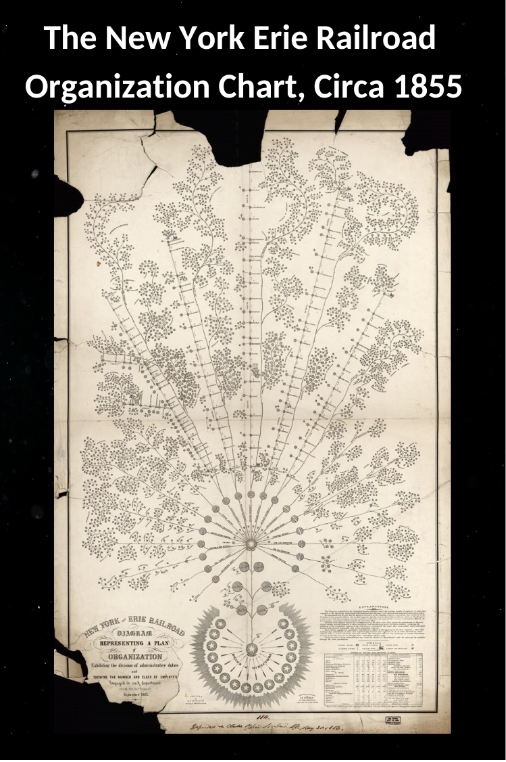The People Leverage Audit
“You take people as far as they will go, not as far as you would like them to go.”
— Jeannette Rankin
Possibly the greatest investment you can make is in people. When you invest right, talent can amplify your impact and profit. When you get it wrong, there is not much that can make you poor and miserable faster. Just like financial leverage, people leverage cuts both ways.
In the past decade of plenty, teams multiplied like offers in 2021. Agents staffed up to meet the demand. Now, with the real estate market reeling, there has never been a better time to do a people leverage audit. Do you have the right people on your team and are they doing the right things?
In the 1850s, the New York Erie Railroad faced a similar problem. They had grown into one of the largest regional railways. But their infrastructure didn’t match their growth. Supervisors and brakemen communicated schedule changes and delays via telegraph. They had plenty of data but lacked clear roles and responsibilities. As Caitlin Rosenthal in McKinsey Quarterly relates, “One delayed train, for example, could disrupt the progress of many others. And the stakes were high: with engines pulling cars in both directions along a single set of rails, schedule changes risked the deadly crashes that plagued 19th-century railroads.” Enter General Manager Daniel McCallum who is credited with creating the first organization chart.

McCallum organized his chart to show not just hierarchy but also responsibility. The chart is inverted with the board of directors at the bottom, like the roots of the tree. Senior leaders form the trunk, supervisors the branches and everyone from clerks to watchmen the leaves. Though unconnected, McCallum’s org chart reflects the “Decision Tree” delegation model author Susan Scott advocates in Fierce Conversations. Board members and directors set company goals and direction from the roots. Supervisors and brakemen were given authority over local decisions higher up in the tree. From roots to leaves, McCallum’s org chart was given clarity about their role, the decisions they were empowered to make, and the decisions that required leadership. And this clarity led to smoother operations and continued growth for the railroad.
With McCallum’s innovative org chart in mind, it’s time to create your own org chart and conduct a quick People Leverage Audit in five simple steps.
1) Draw Your Org Chart
You can put leadership at the top like modern org charts. Or leadership at the bottom like McCallum. You get to choose. Just put everyone on a piece of paper and connect direct reports with lines. Include descriptive titles (“Lead Buyer Agent” vs “Grand Poobah of Production”) under each person. Note: If you’re a solo agent, you have a team too. List the vendors you work with from your mortgage partner and inspector to your contract-to-close company and coach.
2) Add Simple Job Descriptions
Under each person, include their core job description. The best technique I’ve learned for this is to answer this question: What are the three things they must do exceptionally well or they’ll lose their job? So for the Grand Poobah…err… Lead Buyer Agent, you might list: 1) Write and negotiate winning contracts; 2) Convert buyer appointments; and 3) Manage showing agents.
3) Score for Energy and Results
On a scale of 1-10, based on how much energy you invest in this person, how well do they deliver results? We’ve all experienced the superstar performer that puts the “loco” in locomotive. They get the job done but derail your energy in the process. A 10 on results and a 1 on energy is a 5, maybe lower.
4) Look for Gaps
Look at your org chart for essential jobs that don’t show up. Who is in charge of working the database? Who converts leads to appointments? Who owns listing marketing? If you don’t see it under someone else’s title, guess what? It’s you. In my experience, most agents neglect adding their own job description. Don’t beat yourself up. The whole point of this exercise is to get clarity around job match and responsibilities. You may identify that you have the wrong person for your business or maybe right for you but for the wrong role. You also may see that you’re missing a relationship.
5) Realign for Current Needs
Giving your engine-ious admin new responsibilities is a good thing for them and for you. Chances are you can give people permission to stop doing stuff that seemed cool and important last year but looks a lot like a distraction this year.
The gift of this exercise is absolute clarity for you and your people. Expectations get aligned. Non-essential tasks get dropped. Neglected priorities get new ownership. Everyone knows what to expect. You can avoid two trains barrelling toward a collision while a neighboring track sits empty.
One question to ponder in your thinking time: Are my people as clear as I am about their core responsibilities?
Make an Impact!
Jay Papasan
Co-author of The One Thing & The Millionaire Real Estate Agent

Leave a Reply
You must be logged in to post a comment.